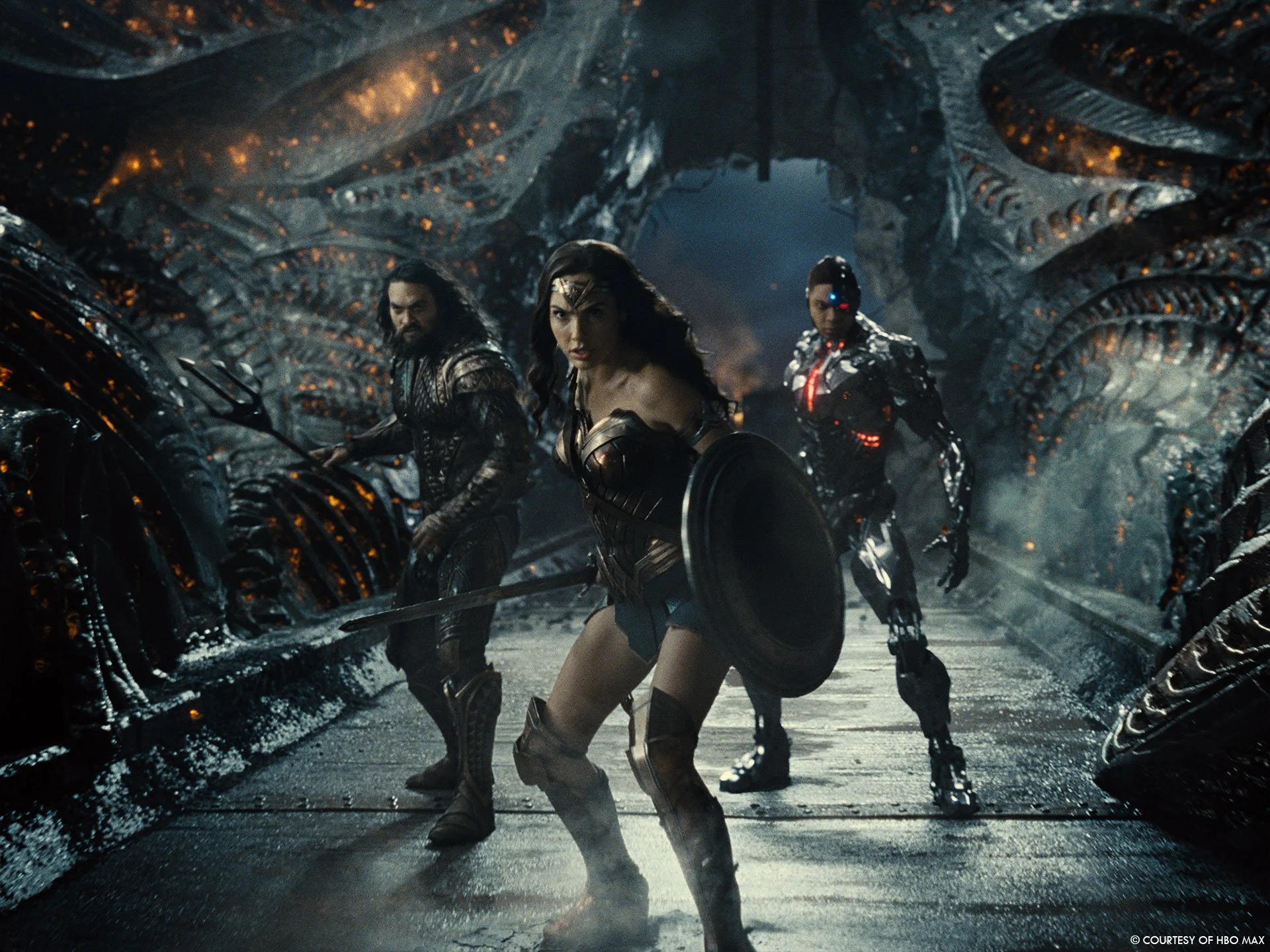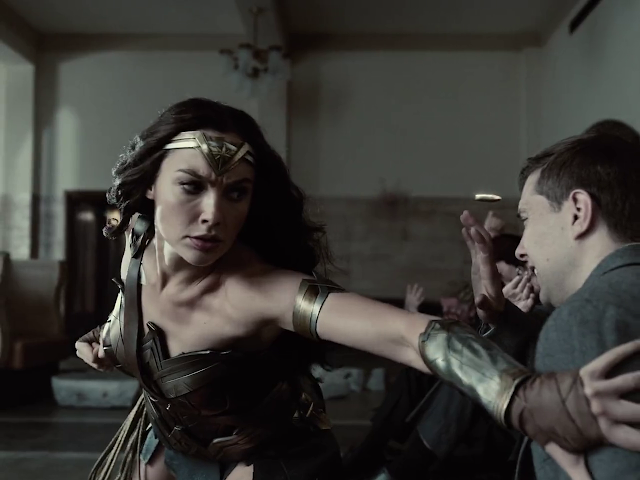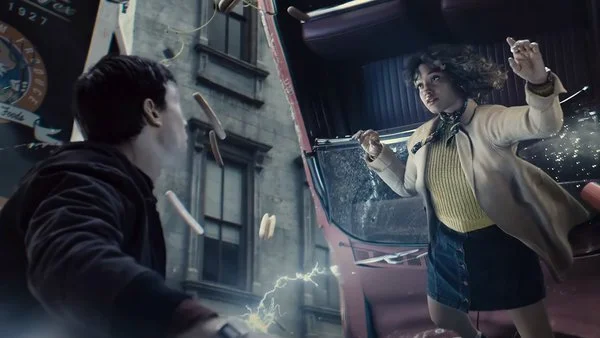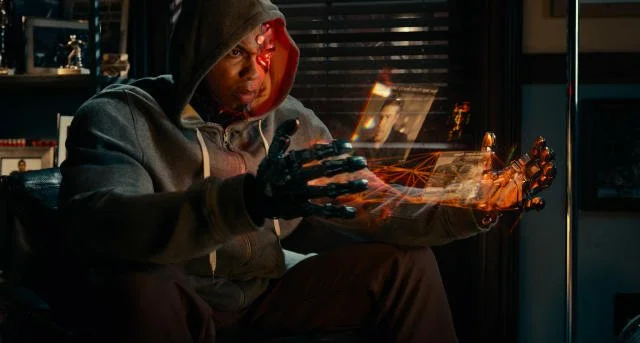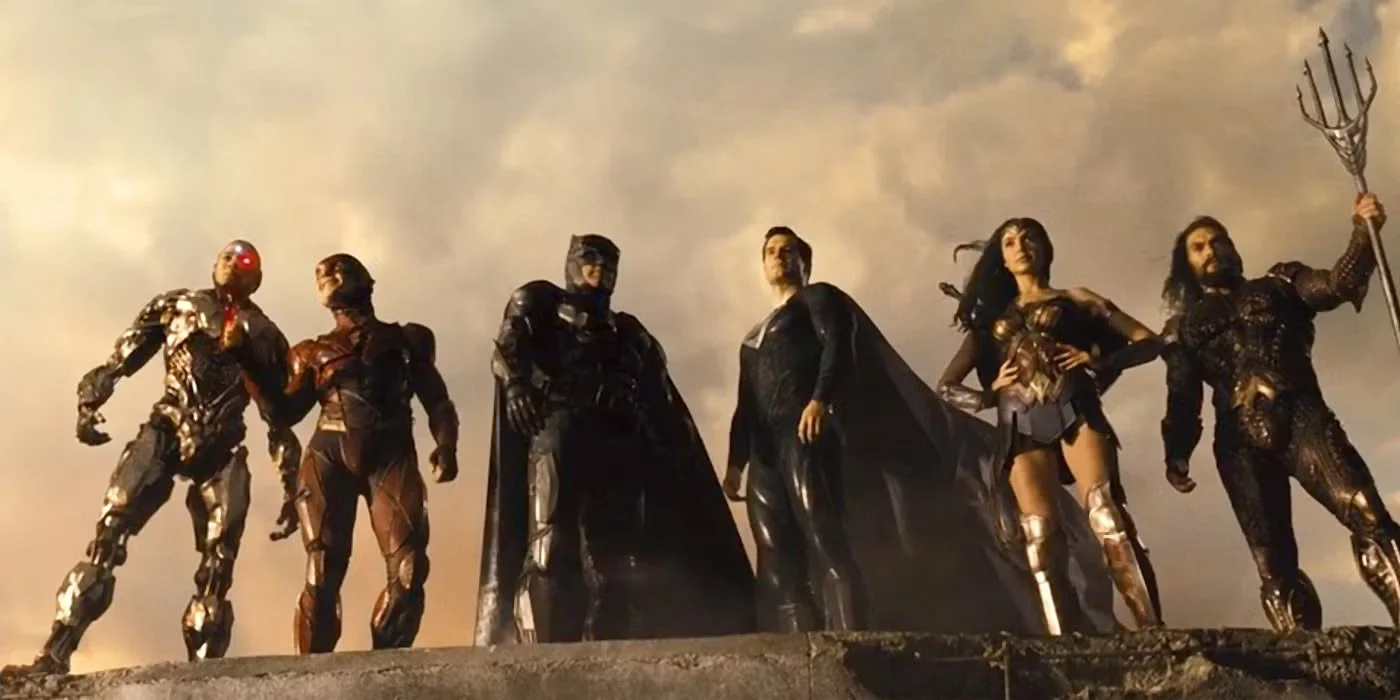Zack Snyder’s Justice League: A DCEU Retrospective (Part 10)
Rating – 5/10
**SPOILERS**
Let me start by saying yes I was among those who denied the existence of this film for several years and yeah I know I was wrong. '
Whatever.
Welcome back to the DCEU Retrospective, the series exploring the history, and now the downfall, of the DC Extended Universe. Before things really go downhill for the franchise though, it’s time to explore the franchise’s last brush with the guy who wants to make a movie where Batman gets sexually assaulted.
We did it. We’ve finally reached the Snyder Cut. And I had to sit through all 4 hours of this again (if that’s not commitment, I don’t know what is).
Zack Snyder’s Justice League is an alternate cut of 2017’s Justice League, released in 2021. In other words, it’s the second half of the single most ridiculous behind the scenes story in the DCEU, maybe even in the 21st century. A few entries back, I explained how Snyder had shot most of Justice League back in 2016, before personal tragedy caused him to back out of the project. Warner Bros would take advantage of this by hiring Joss Whedon to replace him and forcing vast changes to Snyder’s work, such as cutting the runtime in half, adding a more Marvel like tone and color palette, and reshooting almost all of Snyder’s work. I talked about the reception to the theatrical cut in its entry of the series, so here I’ll just leave it at this: it could’ve gone better.
Right away, fans of both DC and Zack Snyder (especially the ones who thought the “save Martha” scene was incredibly profound) rejected Whedon’s version of the film, immediately assuming it was inferior to what Snyder was creating. And so a movement was born. The Snyder Cut movement.
I cannot stress enough how big this thing got. For all of 2018 there was debate on whether or not it even existed. A petition got over 100,000 signatures, #releasethesnydercut went viral more than once, someone flew a plane with a banner over ComicCon in 2019 demanding the Snyder Cut be released. They might’ve done that twice actually. And you had people like Jason Momoa, Ray Fisher and Snyder himself assuring people that this thing did actually exist, which kept the movement alive and kicking long enough for all this to go down. On the other side of the debate, most people wrote the idea off as a pipe dream. At the time, I felt that there was no way it was as complete as we were being told it was, and Warner Bros probably didn’t want to fund the completion of this 3.5 hour behemoth. It was just something that would never see the light of day, no matter how many fans called Warner Bros, no matter how many billboards and banner ads were bought, no matter how many cast members voiced their support. It was just a myth.
And then suddenly it wasn’t.
Turns out, Zack Snyder saved his unfinished cut on his way out the door back in 2017, not really intending to release it, but just to hold onto it as a little memento. So he did have it, and once the fan demand got too big to ignore, Warner Bros started meeting with Snyder about release plans. Eventually, it was announced that Zack Snyder’s Justice League would be an exclusive release on the new-at-the-time streaming service, HBO Max. Snyder was given about $70 million to finish his cut, and went to work restoring all his original footage, the original score, completing the VFX, and even filming a new epilogue (and at some point expanding the runtime to 4 hours). After 4 years, the world finally got to see Snyder’s complete vision for Justice League. And it was . . . well it was something.
Million dollar question: is the Snyder Cut an improvement on the 2017 cut? I mean. I guess. It definitely feels more interesting from an artistic perspective, as this is clearly a complete, distinct vision put on screen. Snyder goes all in on his filmmaking style, and rounds the story out with considerable world building and backstory, making this look and feel very different from typical superhero fare. Main villain Steppenwolf actually looks awesome now, has a bit of motivation, and is genuinely intimidating (dude spends his first scene chucking horses around like they’re nothing), and many of Snyder’s collaborators really seem to be taking this film far more seriously than they did the theatrical cut (probably because they actually cared when they were shooting this in 2016, before Whedon’s reshoots). Ben Affleck in particular finally doesn’t seem bored this time. Snyder also shows that he listened to some criticism of Batman v Superman. The Snyder Cut is nowhere near as grim in its tone or heavy handed in its storytelling.
The problem is that Snyder has been fully let off the leash with this film. When he got allowed to release his version of Justice League, it feels like nobody was willing to tell him when something was a bad idea. The result is a product of pure indulgence. For as many as Snyder’s strengths are maximalized, his weaknesses are as well. The visuals are drowning in Snyder’s high contrast, low saturation style, and while this was reined in a bit for BvS, it feels like it’s regressed to Man of Steel levels of excessive. Frankly, a ton of shots look fake and digital, and I can’t tell if that’s down to plain old rough effects or the impact of Snyder’s preferences. Snyder also lets scenes run in for much longer than they need to, and several scenes feel like they could’ve been cut much shorter without losing much as value. For context, the first scene of the Snyder Cut is a flashback to Batman v. Superman, showing Superman’s death, as his screams are heard around the world. All this really needs is a couple shots of Superman screaming, showing the sound waves, a few shots of them traveling, and some quick shots showing various characters in various places hearing and reacting to the screams. Could be done in a couple minutes of screen time. However, this takes an entire 6 minutes to get this pretty simple concept across. Far too many shots of the sound waves traveling, extended shots of characters reacting, and not to mention the excessive slow motion dragging it out even further. This is just the opening scene. Now apply this style to the rest of the movie and you get an idea of why it runs 4 hours.
And that’s one of the biggest issues with The Snyder Cut. It’s just way longer than it needs to be. The scenes go too long, the slow motion is everywhere, and Snyder is free to put as much world building and lore as he wants into the film. On one hand, it’s always good to flesh out the world and characters more, but so much of it goes nowhere. Several scenes showing Lois Lane grieving Superman and not going back to work don’t play into the overall narrative, the Flash has a brief interaction with his eventual love interest that’s never brought up again, the superhero Martian Manhunter is pointlessly thrown into a couple of scenes (during one of which he poses as Superman’s mother while talking to Lois, for no clear reason). When your movie is reaching 4 hours, it needs to be justified. Random scenes like this that can be easily discarded should have been discarded already. A good filmmaker should be able to get rid of shots and scenes they like if it doesn’t service the overall film, and here Snyder displays that he’s incapable of doing so. He desperately needed collaborators who could tell him when to take out unnecessary scenes and excessive slo mo shots (the one with the cgi sesame seed flying towards the camera during a car crash, for example). Without that, far too much of this film is weighed down in excess, and the impact of some Snyder’s dramatic beats and character arcs are drowned out by how much is happening in the plot (especially those related to Cyborg, who finally gets a more rounded out storyline buried somewhere throughout everything else).
Frankly, it’s frustrating that after 2 attempts and all the campaigning, we still don’t have a genuinely good Justice League movie. There are definitely ways that this is better than the Joss Whedon cut, but ultimately it goes too far in the other direction, as we went from a bland and emotionless yet inoffensive product to an unwieldy, excessive, and yet passionate mess. This whole thing is really just pure Snyder. For all his faults, it is undeniably a Zack Snyder creation, and at the end of the day that works for some people.
However, the most fascinating thing about The Snyder Cut is that it is a result of probably the biggest fan campaign in cinematic history. The fact that thousands of people were able to get together and essentially force a studio into spending millions on this project is remarkable in its own way. It also serves as a somewhat fascinating case study in what happens when a filmmaker like Zack Snyder is let loose to do anything he wants, and there is a novelty in seeing that he finally got to make the film he wanted after it was pretty much taken away from him and made unrecognizable. There is something special in that fact, that I think gives it the smallest leg up on the 2017 cut.
Of course, the fact that the fan movement was ultimately successful would bring concern, as many were concerned that the success of the movement, whose actions were labelled as harassment and bullying by some, would inspire similar movements from more toxic fans who now believed they could have their way. However, the Snyder Cut Movement was a genuine phenomenon, a one time thing that took years of effort and plenty of organization. This is made obvious by how attempts at repeating this success have fizzled out. Snyder fans tried a Restore the Snyder-Verse movement, to try and pressure Warner Bros to allow Snyder to make his originally planned Justice League trilogy (which Snyder maybe wanted, considering how much sequel set up he included in his cut). There’s also the sort of ongoing Release the Ayer Cut movement, attempting to secure a director’s cut of Suicide Squad (no one has shut this down more than David Ayer himself).
Also of note: recently Zack Snyder has seemingly tried to ignite a new movement with his poorly received Rebel Moon movies, claiming upon release that there were apparently expanded, better versions of the films hidden away somewhere. This has gone nowhere. The point is, a movement akin to the Snyder Cut movement can’t be remade. It happened from a perfect mix of circumstances and commitment, and you don’t just recreate that on a whim. Zack Snyder’s Justice League is the result of a singular moment in cinema history that won’t happen again anytime soon, and if nothing else, I can appreciate that.
Even before the swift death of the Restore the Snyder Verse Movement, Zack Snyder made it clear he was done with the DCEU. As he left, the DCEU would continue to fall apart. With the end drawing near, a new director was coming with his first installment to the franchise. An installment that would become the first clear indication of the future.


